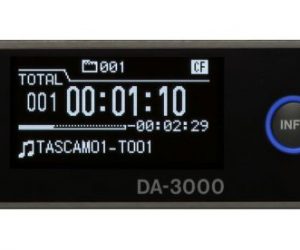
The Quick Mix: Cam Trewin
With Cam Trewin.
Interview: Neil Gray
Who are you currently touring with/mixing?
RÜFÜS, Seth Sentry, The Delta Riggs and The Preatures.
What are some other bands you have worked with?
Alpine, SBTRKT, Bluejuice, Kingswood, Saskwatch, The Rubens and Stonefield.
How long have you been doing live sound and how did you get started?
I started out mixing live sound for friends’ bands over 15 years ago.
What is your favourite console and why?
I have always been an analogue enthusiast, but for the past few years I’ve toured with digital consoles, which has been far more practical. I usually take out Digicos (SD9, SD10 and SD11 on smaller gigs). I find Digico makes the most intuitive digital consoles to work on.
Along with Digigrid and UB MADI, I can use all my Waves plug-ins as well as record every show for a virtual sound check the next day. The best thing about those boards is the ability to lay them out with a workflow that suits me best for each show.
Favourite microphone or any other piece of kit?
The Shure SM57 has to be the all-round work horse and always has been, both in the studio and live. I also can’t work without the Shure B91a; that mic always paints the most accurate picture of inside a kick drum.
It’s always dependent on the source, both vocally and instrumentally. I find myself cycling through all brands and types until I find the mic with the best sound.
Most memorable gig or career highlight?
The show that sticks out the most was a gig years ago at the Espy Hotel in St Kilda for Mix Master Mike from the Beastie Boys. I don’t think I’ve seen a crowd jump up and down quite like that, to the point where I was holding on to the console for dear life and thinking the floor would give away at any minute.
I also recently finished a tour with The Delta Riggs who were supporting The Foo Fighters on their recent Australian Tour. That was an amazing experience, just due to the sheer size of that PA.
What is your mixing setup now, compared to what it was in 2000?
I cut my teeth on analogue boards in the early years, especially the Midas. You can’t beat the immediacy of reaching straight for a channel strip and dialling in that EQ. Digital boards are much more visual and make you fall into the trap of looking at your movements as opposed to just listening. However, the ability to recall the previous nights’ show is invaluable. Additionally, having processing on each channel expands the way I work; it would be hard to go back.
What are some mixing techniques you regularly employ that you’ve learnt in the last 15 years?
My mixing technique is based around the source before anything else; tune the instruments the way you want them to interact in the room. It’s also about feel, balance and not relying on the EQ curve you assume will work. I’m always bypassing the EQ on the channel to hear what my processing is doing.
Lastly, take a walk. The best sound is not about the selfish FOH mix position, it’s about making sure the coverage is feeling right throughout the room. The infill is also really important to me, that’s where the hardcore fans are so they shouldn’t miss out on a great mix.
In the last 15 years, what are the pieces of gear or features that have come out and been game changers for you?
I can’t live without my Waves C6. It’s a modern-day classic tool. I work with a variety of singers, all with different EQ biases and technique. The C6 can be quite aggressive in eliminating those problematic frequencies. The d&b V and J series line arrays, and J and Infra subs, also translate so well. Working with acts that are quite sub heavy, they produce the right depth and low mid clarity I want in the mix. Lastly, MADI devices for virtual sound check and show records have proved invaluable for me in recent years.
How have your working methods changed over the last 15 years?
Listening more intently and training my ears to recognise frequencies. That helps me work much more quickly now and has really helped both with live shows and in the studio over the years.
Any tips/words of wisdom for someone starting out?
Be a good listener. Listen to the artist and take on board their direction and vision. When I started out, I would immerse myself in gigs around town and always threw my hand up to help out. I spent years getting paid nothing but still committed and had a positive attitude about it.
You also need time on your tools. When I first started in the studio, I would assist on records during the day then would stay well into the night after everyone left, do a Save As and have a crack at my own mix. I’d pump things through the outboard and down the console to get a good feel of what did what. I learnt so much more that way.
Photo: Michelle Grace Hunder (Seth Sentry Strange New Past Tour 2015)
















RESPONSES